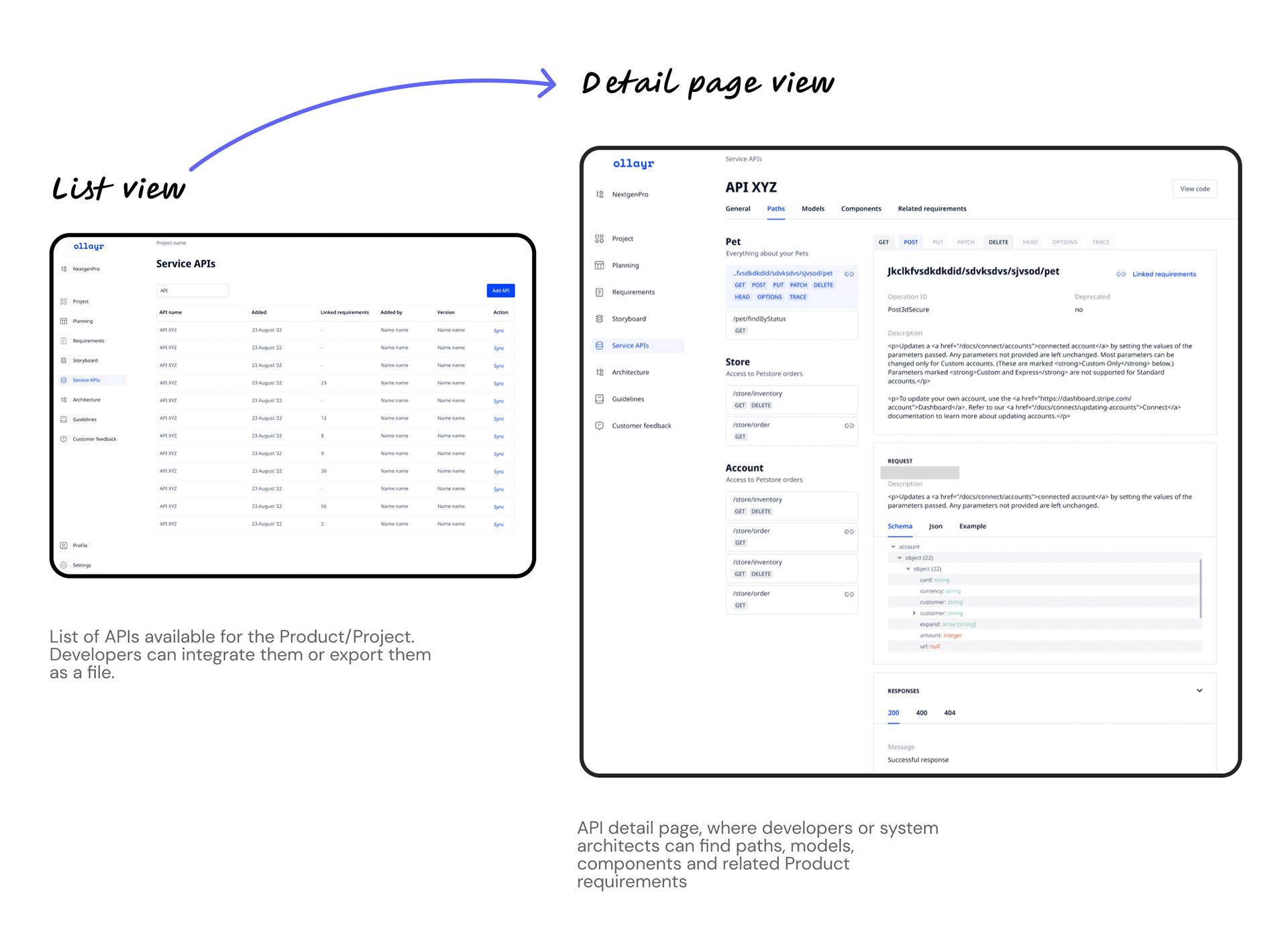Product website: https://www.ollayr.com/
Why did we start the project? Where was the problem?
Throughout over a decade of experience in various product development teams, we've consistently encountered a common issue: the absence of a centralized and comprehensive source of truth and project documentation. This results in scattered information that's challenging to locate when needed.
Setup
While the team was very small and we were working full time, we endeavoured to utilize our free time to the fullest, focusing on research, ideation, and development. It was quite ambitious, but we were willing to take the risk.
The design question:
How might we streamline project management by integrating tools for developers, designers, and project managers into a unified platform, reducing the need for manual data transfer and enabling seamless access to essential project information?
Background
We knew the challenge at hand: the efficient organization and retrieval of diverse information related to product requirements, APIs, UI designs, and technical documentation. The existing landscape of tools like Jira lacked seamless integration and a unified view of interconnected elements and information.
But why existing tools don't give the full picture and full access to the Project information from the business to the feature development? Is there a problem in other organisations and teams?
Competitor analysis
I started with competitor analysis. There are several software tools that do similar jobs, but still don't give all layers of information in hand.
After looking closer at many popular existing tools, I found, that the level of integration and traceability between different artefacts (requirements, designs, test cases, API docs) is not readily available in the existing tools mentioned.
After looking closer at many popular existing tools, I found, that the level of integration and traceability between different artefacts (requirements, designs, test cases, API docs) is not readily available in the existing tools mentioned.
While some tools offer custom fields or integrations, there is no holistic approach to offer a more streamlined experience for product teams.
I decided to gather at least some insights through interviewing team members in various teams, who are using collaboration tools from the competitor research list. I wanted to know what they think how efficiently they work and if they are satisfied with the solution.
Interviews I enrolled participants from various software companies of small to enterprise sizes. I didn't have many interviews, but those I conducted bring quite a few interesting insights.
Interviews
Personas
The Ideation
Following the storyline of the persona, we then introduced the solutions to make his working and collaboration experience much better!
For the MVP, our primary focus was on the Developer persona, but we also designed for other key personas including Designer, Product Owner, and C-Manager. Due to resource constraints and our small team size, we prioritized developing solutions and functionalities that could rapidly deliver value to the user.
Solution
We envisioned the future system as comprising multiple interconnected layers, each contributing to collaborative efforts in distinct areas: the business layer, research layer, requirement layer, testing, and feedback. This structure closely resembled the design thinking process, with business research forming the foundation.
This is our first ideation of the future solution. It looks really ugly, but it was productive and we caught the flow. :)
Design Approach
After rapid wireframing, we decided to go lean and launch the MVP fast and dirty to already start collecting the feedback. Of course, I started with UI components first. For faster development, we used Tailwind UI. Based on tailwind components I designed the needed molecules and organisms to focus on the flows and experience. I used my past experience working with SaaS Products and designed a Navigation hierarchy as a pattern to make the structure clear from the beginning. From summary to detailed items, and from list views to detail pages.
Next iteration of the wireframes:
I focused on the navigation for the main entities and transitions for the faster searching of the related information like Designs to Stories, Epics to Stories, APIs to Stories and Designs
I focused on the navigation for the main entities and transitions for the faster searching of the related information like Designs to Stories, Epics to Stories, APIs to Stories and Designs
Main functionalities
After all discusions we focused on those details and functionalities for the MVP
- Registration / Authentication
- Ollayr Project Management
- (Project) Overview
- Planning layer
- Requirements layer
- Storyboard
- Service APIs
- Architecture Section
- Guidelines
- User Profile
- Settings
- Ollayr Project Management
- (Project) Overview
- Planning layer
- Requirements layer
- Storyboard
- Service APIs
- Architecture Section
- Guidelines
- User Profile
- Settings

Outcome and Learnings
While the Ollayr project did not transition to a full live product, the team gained invaluable insights into the complexities of startup endeavours. The experience highlighted the importance of user research and the impact it has on creating a product that resonates with its intended audience. The design patterns and approaches applied during the project, however, provided a solid foundation.
I really enjoyed working with this Project. The most complex and interesting part was to understand how to convert the problem we found during the research into the Product, and how to achieve the outcome we were searching for and didn't come up with another Product management tool.
Another challenge for me as a Product designer was to learn about developer interaction with tools such as Swagger and transfer similar experiences into our Product.
Conclusion
Ollayr stands as a testament to the tenacity and creativity of a small team navigating the intricate landscape of product design within constraints. While the project did not reach the launch phase, the lessons learned and the skills honed during the process have become valuable assets for the team, setting the stage for future successes in the dynamic world of product development.